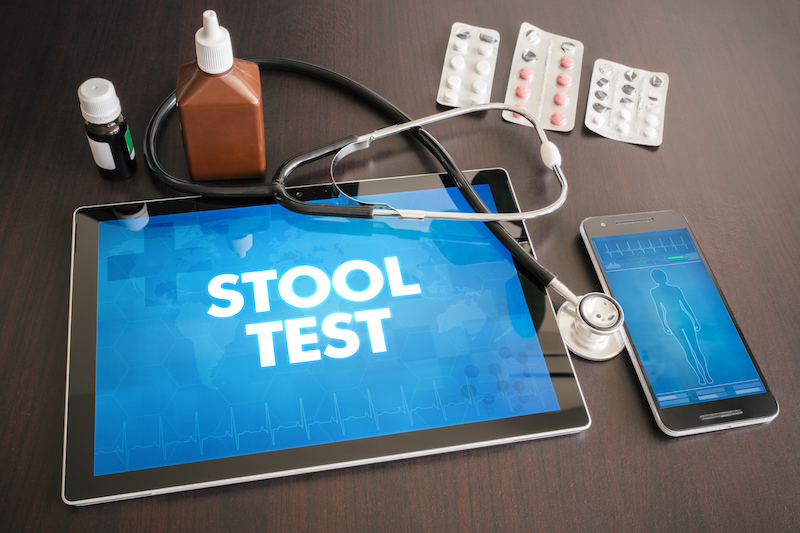What you find in the privacy of your bathroom may be telling you a story about the health of your digestive tract.
The color and shape of your stool can be a way for your physician to know that something may be wrong with your digestive system. However, since bringing in a stool sample isn’t always an option, the Bristol Stool Scale—also known as the Meyers Scale—can help you explain what’s been going on behind closed doors, so to speak, based on the shape and consistency of your stool. Let’s take a look at the breakdown and what to keep an eye out for:
Shape and Consistency
Shape #1: Small, hard, individual lumps that are difficult to pass
This is typically a sign that you may be constipated, which can happen from time to time. Try drinking more water to get things moving and eat more fiber.
Shape #2: Lumpy and sausage-shaped
This is also an indicator of constipation. If this or other signs of constipation continue over the course of a couple of weeks, consider a trip to the doctor to figure out the cause.
Shape #3: Sausage-shaped with cracks
A shape like this is considered normal because of its ability to pass easily and quickly. Typically, it should take no longer than a minute to push a stool out.
Shape #4: Snake- or sausage-like with a smooth and soft texture
In the eyes of medicine, this kind of stool is the perfect kind to have. These types of bowel movements should be occurring every one to three days or so.
Shape #5: Individual soft blobs with clear-cut edges
These easy-to-pass bits of stool may be a sign of mild diarrhea but should pass in a couple of days.
Shape #6: Fluffy, mushy pieces with scruffy edges
If three or more of these come in a day, you have diarrhea. Diarrhea can be a symptom of a host of gastrointestinal conditions, including celiac disease, inflammatory bowel disease (IBD) and irritable bowel disease (IBS).
Drink plenty of fluids and replace electrolytes with soup or fruit juice.
Shape #7: Only liquid and no solid pieces
This indicates that the stool moved through the body too fast. If this happens a few times over the course of two days or more and is accompanied by symptoms such as fever, abdominal pain or signs of dehydration (e.g., headache, dry mouth, etc.), speak with your doctor.
Color
Color #1: Brown
A healthy stool will be a mixture of all the colors of the food you eat combined with bile (a yellow-green substance that helps digest fats in the body). Therefore, practically any shade of brown—or even green—is considered normal.
Color #2: Green
Yeah, we know. The idea of green stool is weird, but oddly normal, as long as it only happens once in a while. It may be the result of something you ate or from eating green vegetables. However, if your stool is consistently green, it may mean the food is running through your body too quickly, and the bile doesn’t have time to break down. If this occurs, speak with your doctor.
Color #3: Red
Like green, red stool can simply mean you ingested something red in color (natural or artificial).
That said, if your stool is bright red—think fire engine red—it means you could be bleeding from somewhere in the large intestine. It could also indicate bleeding from a scratch or hemorrhoid near the rectum. Constant red stools should be brought to the attention of a doctor.
Color #4: Black
Like bright red, black stool (or dark maroon) may be an indication of bleeding, just further up in the digestive tract (e.g., an ulcer). This is especially true if it smells and has a tar-like consistency. However, black can also be caused by iron supplements or over-the-counter medications for stomach relief.
Color #5 Yellow/Lightly-colored
Yellow or lightly-colored stool can mean there’s too much fat in your digestive system. As a result, your body may not be absorbing nutrients correctly. These color variations may also be a side effect of certain medications or a clogged bile duct.
If any of the abnormal stool types or colors seem to be plaguing you for an extended period of time or you have any concerns regarding the health of your gut, trust your gut and contact us today.


